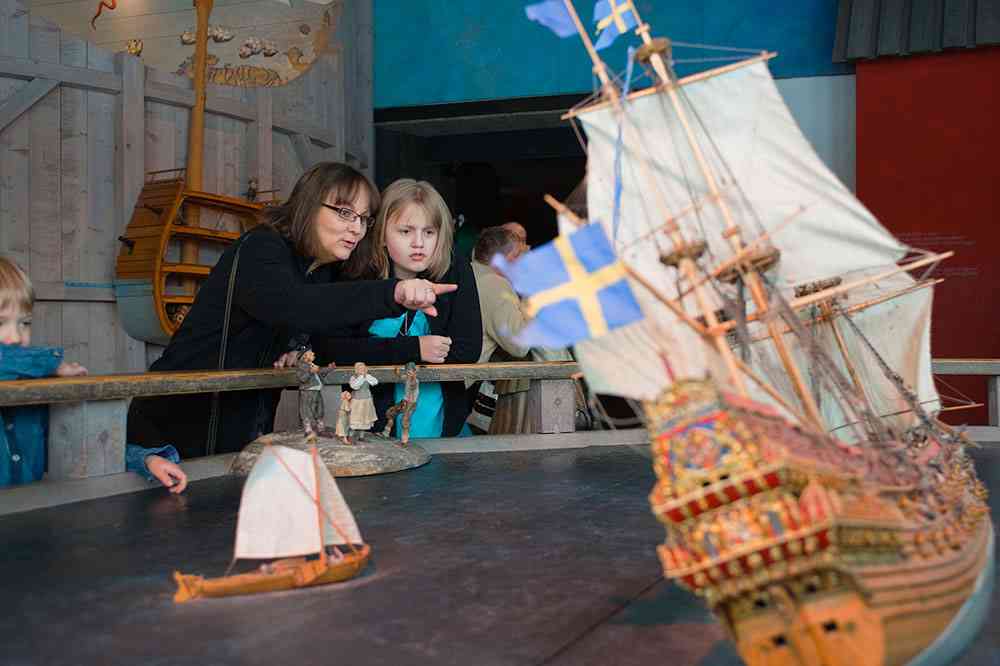The Vasa Dynasty
Gustav II Adolf (1594-1632) was the son of King Karl IX and Kristina of Holstein-Gottorp. His grandfather was Gustav I, or Gustav Vasa as he is often called today, the first of the Vasa dynasty. Gustav Adolf and his wife Maria Eleonora of Brandenburg were the parents of Queen Kristina, the last of the Vasa dynasty to sit on the Swedish throne.
The Vasa family originally had a bundle of sticks, called a fascine in English and vase in Swedish, as their heraldic symbol, and it is from this that the ship gets her name. By the 17th century, the vase looked more like a sheaf of wheat, and Vasa's stern carries a gilded sheaf between two cherubs on the stern as the ship's name board. The stern also carries the king's initials, GARS, for Gustavus Adolphus Rex Sveciae (Latin for Gustav Adolf King of Sweden).
War and bureaucracy
When Gustav Adolf acceded to the throne in 1611, he inherited three wars: with Russia, Denmark and Poland-Lithuania. The situation was difficult, to say the least. Gustav Adolf was at war during 18 of the 21 years of his reign, both wars he inherited and wars he sought.
At the same time, Sweden was developing very quickly. Gothenburg was the largest of several new towns established in these years. Uppsala University was refounded. Under Gustav Adolf's direction, much was done to organise the country that still affects us today. The Swedish bureaucracy was born.
Sigismund
Gustav Adolf's cousin Sigismund was the king of Poland-Lithuania. He had also been king of Sweden 1592-1599, but was deposed, partly because of his Catholic faith. He, and many others in Europe, thought that he was the rightful king of Sweden. The conflict between the cousins stirred up strong feelings. Gustav Adolf was committed to protecting the Lutheran confession, and his wars in the name of religion expanded Sweden's borders and laid the foundations for Sweden as a great power.
